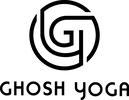|
It is often thought that posture sequences are important. The order in which we practice the postures can prepare us for one that follows, develop skills that move us toward a "peak" pose, keep us out of injury, or facilitate a group of people to move together cohesively. Sequences can also link us to history. However, through a historical lens, we have to take into consideration how sequences came to be and the methods they were built upon. GROUPS OF POSTURES Yoga poses were grouped by the orientation the body had to the floor. Seated postures were one group, kneeling another. Standing was different than reclining. This meant that anything that was done standing was done within the same section of practice, regardless of what the body was doing while standing. This is certainly the case in Bikram Yoga. Postures are done in the order: 1) standing, 2) reclining, 3) kneeling, 4) sitting. If we view Bikram's sequence this way, it makes sense that a posture like Cobra is done in the reclining section despite the fact that it is simpler for the body than the Standing Backbend or a backbend standing on one leg (Standing Bow). It also makes sense to have Fixed Firm, Half Tortoise, Camel and Rabbit postures — that do very different things with the body — grouped together, as they are all done from a kneeling position. There is historical precedent for this method of practice as early as 1939. Buddha Bose instructs, "I have classified the exercises under the six headings as follows: 1) Padmasana, 2) Sitting Postures, 3) Reclining Attitudes, 4) Standing Positions, 5) Kurmasana or Tortoise Poses, 6) Mudras." He goes on to say: Students should start by practicing a few exercises from each group ... and then gradually work up to the more difficult ones. In the 1950s, Yoga Postures for Health (compiled from the Self-Realization Magazine founded by Paramahamsa Yogananda) presents a similar idea. It states: The various postures may be grouped naturally into three general divisions for learning: sitting postures, lying-down postures, and standing postures. Do not attempt all of the postures listed in this article at any one time! This list is intended only as a sensible guide from the simple to the more difficult asanas in each of the three categories. Practice only a few at any one time, and continue practicing those few until you perfect them before you attempt another group. CONCLUSION When thinking about a yoga sequence, it's important to take into consideration the values of sequencing itself. What informs the order? Is it that the postures are related in their use of the body? Or the use of opposing muscle groups? Or is it orientation to the floor or how a group can move together gracefully? There are no right answers here. However, if we expect a sequence to accomplish something specific in the body, but our sequencing is based on something else, this can lead to confusion. Sources:
Bernard, C. & Tesniere, B. 1950s. Yoga Postures for Health. Bose, Buddha. 2015 (1939). 84 Yoga Asanas.
2 Comments
|
AUTHORSScott & Ida are Yoga Acharyas (Masters of Yoga). They are scholars as well as practitioners of yogic postures, breath control and meditation. They are the head teachers of Ghosh Yoga.
POPULAR- The 113 Postures of Ghosh Yoga
- Make the Hamstrings Strong, Not Long - Understanding Chair Posture - Lock the Knee History - It Doesn't Matter If Your Head Is On Your Knee - Bow Pose (Dhanurasana) - 5 Reasons To Backbend - Origins of Standing Bow - The Traditional Yoga In Bikram's Class - What About the Women?! - Through Bishnu's Eyes - Why Teaching Is Not a Personal Practice Categories
All
Archives
May 2024
|








 RSS Feed
RSS Feed